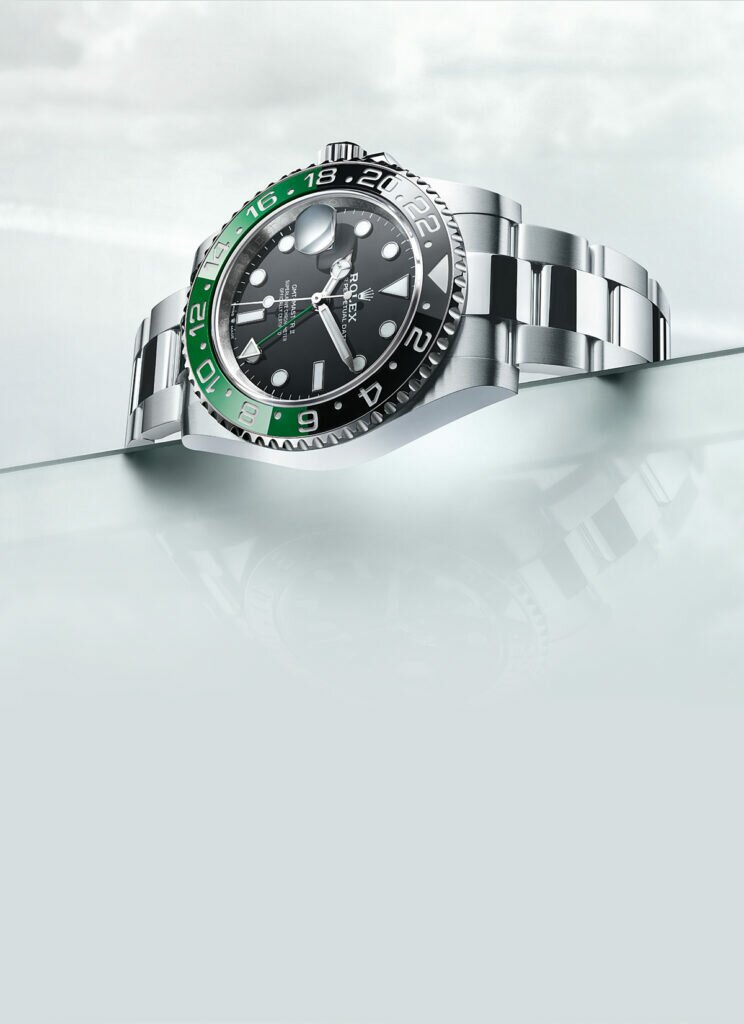Horology — the science and art of keeping time — has been part of human existence for nearly three and a half millennia. Through history, it has brought us countless milestones and inventions, including the invention of the pocket watch in the 1500s and the wristwatch in the 1900s. So, it is not surprising that in recent years, the watchmaking industry seems to be celebrating anniversaries almost every year. This year is no exception. Here are five significant anniversaries you should know about.
50 Years: Audemars Piguet Royal Oak
Launching the Royal Oak — or rather the Royal Oak “Jumbo” reference 5402 to be precise — was an audacious move. As Audemars Piguet announced the watch in 1972, it was the most intricate integrated bracelet steel timepiece ever made and carried the unimaginable price tag of 3,750 Swiss francs. With that exact amount, you could buy a Jaguar XJ6 back then.
The Royal Oak is a genre-defining object of desire that comes in multiple sizes and a variety of materials, with and without complications, such as the chronograph and perpetual calendar. However, what is remarkable is that even after half a century, the watch’s original and distinctive silhouette from 1972 remains largely intact.
Audemars Piguet honours the Royal Oak’s golden jubilee by updating the watch’s iconic design in subtle ways. It’s so subtle, in fact, that you wouldn’t even know it was a 50th anniversary watch until you notice the new dial colours and the special openworked rotor marking the milestone anniversary.
Highlights of the range of new watches announced thus far include the Royal Oak Selfwinding Flying Tourbillon Openworked, the first of its kind 39mm Royal Oak Selfwinding Flying Tourbillon Extra-Thin RD#3 (shown), and — the cherry on top — the fifth generation of the Royal Oak “Jumbo”, reference 16202, powered by the all-new calibre 7121.
40 Years: Rolex Oyster Perpetual GMT-Master II
The Oyster Perpetual GMT-Master was created at the request of Pan American Airlines under reference 6542 in 1955. It presented a completely new way for a wristwatch to display both a local time and the time in another part of the world at once. A 24-hour hand and a rotatable 24-hour graduated bezel enabled the watch to do this.
It evolved into the GMT-Master II in 1982 after 27 years and several generations, when Rolex changed the watch’s movement to allow the hour hand to be set independently of the minute and 24-hour hands. Rolex then overhauled the watch in 2005 by including a Cerachrom — Rolex’s term for ceramic — 24-hour graduated bezel insert.
The Oyster Perpetual GMT-Master II’s most celebrated version to date received the nickname “Batman” in 2012, and featured a blue and black Cerachrom bezel. An overnight sensation, the “Batman” was the watch that started the era of the waitlist.
As Rolex celebrates its 40th anniversary in 2022, the Oyster Perpetual GMT-Master II remains a fixture in the company’s contemporary catalogue and is viewed by many as the most functional timepiece in Rolex’s professional collection. Even though the brand hasn’t commented directly on the milestone year, it did release an unexpected version of the watch: an Oyster Perpetual GMT-Master II with a green and black Cerachrom bezel and a crown on the left side of the case.
It is available with a Jubilee or Oyster bracelet, making it perfect for people who prefer to wear their watches on their right wrist.
25 Years: Chopard L.U.C
Karl-Friedrich Scheufele, Chopard’s co-president, led the charge to establish the Chopard manufacture in 1996. He wanted to produce handcrafted mechanical movements under a new entity named Chopard L.U.C — the initials of the brand’s founding father, Louis-Ulysse Chopard.
In 1997, it released its first in-house watch, the L.U.C 1860, powered by the micro-rotor equipped calibre 1.96 (later called the 96.01-L), with both COSC and Geneva Seal certifications for chronometric stability. It established a benchmark for the manufacture’s chronometric and aesthetic expectations, along with a philosophy of constant technical innovation.
With the unveiling of the L.U.C Full Strike in 2016, the maison jumped ahead of its likeminded peers. The timepiece, a minute repeater, has a major twist: its dial and minute repeater gongs are milled from a single sapphire block. It is said to be the world’s first chiming watch to use sapphire crystal gongs that produce a crystal clear sound.
The watchmaker outdid itself in celebrating its 25th anniversary this year with the “Sound Of Eternity” trio of chiming watches equipped with Chopard’s monobloc sapphire crystal and gong technology: the L.U.C Strike One chimes the hours in passing, the L.U.C Full Strike Tourbillon combines the 2016 40 YE A R S Full Strike with a fully integrated tourbillon (COSC certified), and the L.U.C Full Strike Sapphire presents the Full Strike with a sheer transparent sapphire dial and case.
20 Years: IWC Schaffhausen Big Pilot’s Watch
From the oversized “B-Uhr” of the 1940s to the legendary Mark 11 from 1948 commissioned and used by the British Royal Air Force, no other watchmaker’s history is as deeply rooted in aviators’ timepieces, as IWC Schaffhausen. It’s not just in its history. You can ask anyone with even the slightest knowledge of present[1]day IWC Schaffhausen to name a timepiece from its current catalogue, and the first watch they will probably name is the Big Pilot’s Watch.
Although inspired by and descended from the almighty “B-Uhr”, the Big Pilot’s Watch was designed for the 21st century. Launched as Ref 5002, the 46.2mm timepiece featured a large central second hand, a large “onion” crown, and a behemoth eight-day power reserve. With a redesigned dial and a large case, IWC introduced reference IW5004 in 2006, retaining its large form factor.
From a straight-faced tool watch to a versatile timepiece for all characters and occasions, the Big Pilot’s Watch evolved. In 2006, IWC included complications, beginning with the perpetual calendar.
A pivotal offering of IWC, the Big Pilot’s Watch turns 20 this year, with ever more expressive dials, new cases in Pantone-colored ceramic, and a series of complications. There is even a smaller 43mm diameter variation, launched in 2021. Nevertheless, the IW5010, which adheres to the Ref 5002’s 46.2mm size and spirit, remains top on the wishlist for most people.
10 Years: Bulgari Octo Collection
The Bvlgari Octo collection has the shortest story of all, but it just might be the most impressive. Bvlgari began with the Octo L’Originale in 2012 and the Octo Finissimo in 2014. Then, it went on to create the Octo Roma in 2017, and, last but not least, produced eight watches that broke world records in the realm of ultra-thin watches. But records aren’t the only reason it’s highly sought after. In the short time Octo has been around, it has become a desirable collection mostly due to Bvlgari’s superb ability to make visually appealing watches that feel exceptional on the wrist.
It achieves this by developing in-house competencies for every aspect of its watch production. Consequently, the brand has been able to conduct research and test the watches’ capabilities to the limit, leading to the creation of marvels such as the thinnest minute repeater in 2016, the thinnest chronograph with GMT function in 2019, and the thinnest perpetual calendar in 2021, just to name a few of the Octo Finissimo’s record-breaking watches.
For this decade’s celebration, Bvlgari introduces two anniversary editions: the Octo Finissimo Automatic and the Octo Finissimo Chronograph GMT Automatic. One of the primary differences between these and the regular production version are the dials imprinted with the original sketches that were developed during the initial design process.
As part of the occasion, the brand also unveiled the eighth chapter of the Octo Finissimo record breakers. Octo Finissimo Ultra (shown) has a thickness of only 1.8mm, making it the thinnest mechanical watch in the world.
Just to demonstrate that the Octo is looking towards the future, Bvlgari has engraved a QR code on a component of the watch’s face. When scanned, it leads an owner to an NFT artwork that opens up a digital universe beyond the watch.





